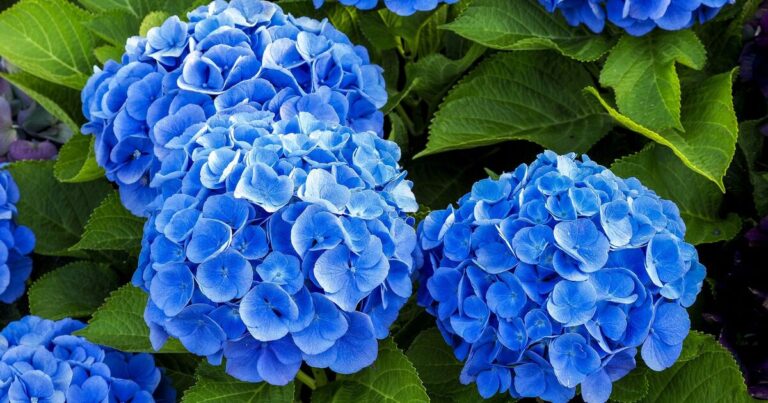Hydrangea varieties, such as Hydrangea macrophylla and Hydrangea serrata, come in a variety of colors ranging from pink to blue, with every shade in between, including fuchsia, plum, and periwinkle.
However, the color of the flowers can change depending on the amount of aluminum the plant absorbs from the soil, which depends on the soil's pH value.
High aluminum levels in the soil and an acidic soil pH will produce desirable vibrant blue to purple flowers.
Low levels of aluminum in the soil will result in a variety of pink flowers.
However, not all hydrangea species change color – some white ones do not change color, and some have been bred for specific colors.
First of all, you need to test the pH value of your soil: acidic soil (low pH value) will produce blue flowers, alkaline soil (high pH value) will produce pink flowers.
You can buy a soil test kit to check your soil's pH level from Amazon for £12.99 or B&Q for £6.99.
Once you know the approximate pH level of your soil, you can adjust it to produce pink or blue hydrangea blooms.
So what can you use to change the colour of your hydrangeas? On the British Hydrangea Facebook page, one gardener shared photos of a “beautiful” hydrangea with vibrant blue flowers, claiming it was all done with just a few kitchen scraps.
“This is a few years old. I fed it coffee grounds,” wrote Shanta Patel, claiming the plant was originally pink when she bought it from Ikea.
When asked how she applies the coffee grounds to the plants, Shanta replied, “You apply the layers. [of used coffee grounds] Please put it on top and water it every month.”
When asked how long it took for the pink hydrangeas to turn blue, Shanta claimed the results were seen “within a year.”
You can also use orange peels, egg shells or peat if available to help maintain soil acidity.


